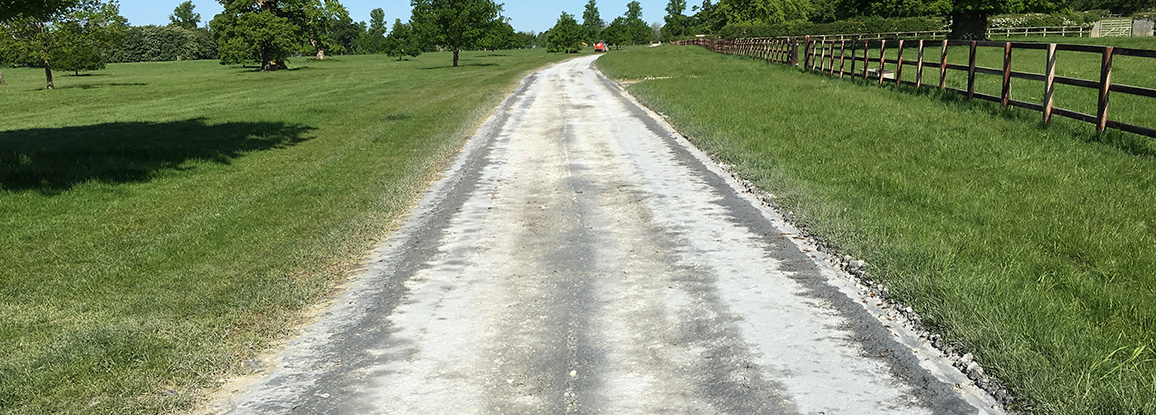Blenheim Palace
Background
We have been working with Blenheim Palace over the last couple of years to complete an on-going project to cement stabilise main access roads and visitor routes enabling them to tarmac on top. Past attempts to lay tarmac on to existing tracks without any stabilisation have resulted in subsidence and costly break up of new tarmac.
Our last project for them was a 500m stretch of rough track that runs through the parkland and is used for many of the public events held at the Palace. The requirement was to cement stabilise an old existing stone track to three meters width.
Extra stone was required to bring up the level of the surface to allow sufficient draining of rainwater.
The job was over the last 10 days of May 2016.
Detail
We surveyed the track, looking for stone depth, dimensions, drainage options and any potential services that could be disturbed.
Fortunately all services were deep enough not to obstruct our work. stone depth was sufficient throughout, we had to add a further 200 tonnes of clean 75mm down to bring the level up enough to allow drainage.
We lay out the new stone with our 20 tonne JPM dump trailer; we have fitted high floatation tyres for minimum ground pressure and maximum stability.
We then level any uneven new stone with a 13 tonne excavator. We then use our Kirpy ripper to tear through the new stone into the original track surface to loosen material and destroy any pothole structures.
Once we have a suitable working depth, in this case 8-12" we use our Kirpy crusher to crush and mix the new and old stone down to a consistent size and to create fines that will bind with the cement.
We then grade the surface to give suitable drainage and create a smooth even running surface.
At this point we then hydrate the track depending on conditions. We use our tanker to put down roughly 10,000L of fresh water.
Once the track is hydrated and the material is consistently moist throughout, we add cement. Using our large trailed cement spreader we can quickly and accurately spread large volumes of cement. On this occasion we used 41.6kg per square meter of track, stabilised to a depth of 8".
Once spread we use our ripper again to thoroughly mix the cement to the specified depth. We may add more water depending on conditions at this point.
Now we have gained our depth we aim for consistency using our crusher to further mix cement and level any large stones that may have risen.
We then give a final grade to allow drainage and to give a good running surface; we simultaneously use our compaction plates to give compaction down to 50cm.
Now the entire track has been thoroughly compacted we add more water and continue compaction in order to seal the surface. The result is a strong, long lasting rustic track, bound by cement.
We finished on time (just before the popular Blenheim triathlon) and within budget.

